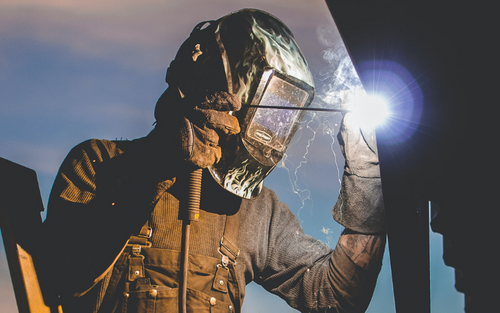Proper FR Care: When to Repair, Replace and Wash
Fire-resistant (FR) clothing protects the worker wearing it by reacting to fire and heat differently than normal clothing does. The flame-resistant properties of FR clothing allow it to resist igniting (or extinguish quickly if it does), melting, and tearing or breaking, and they are also thermally insulated. Where possible, always look at the product manufacturer’s guidelines for maintaining your FR clothing and follow the compliance rules for your industry. Some care rules will apply to most garments across brands, though.
Storage and Use
FR clothing should be stored at room-temperature in a secure location when not in service. Make sure that the location is protected from pests and moisture that could compromise FR qualities. Like all PPE, FR garments should be inspected thoroughly before use to check for defects and damage that could result in injuries. Encourage everyone to be vigilant when wearing FR clothing, especially if they’re going to be around sharp objects or other equipment that could damage it. For some jobs, consider adding disposable FR clothing to your gear for additional protection.
Check for the following signs of damage that mean you should remove a garment from service permanently (or temporarily):
- Thin or torn fabric or everyday wear and abrasion, especially in the joints
- Any elements like zippers or buttons that no longer function
- Significant alterations not in the original clothing design
- Garments with an improper fit or that are uncomfortable
- Stains or spots that can’t be removed by cleaning
Washing
The flame-resistant fibers make the FR clothing, and it doesn’t matter if those fibers are inherent or treated. The FR properties will last through laundering and normal job stress. FR clothing should be washed properly—it isn’t the same as regular clothing and shouldn’t be laundered with regular clothing. A home laundry machine can be used to wash FR clothing, but if the clothing is soiled with heavy grime or tough buildup, wash it in an industrial machine. Avoid exposing your FR clothing to certain workplace chemicals like insect repellent (especially DEET), and when laundering, avoid anti-static or wrinkle-free dryer sheets, fabric softeners, starch, and chlorine bleach.
Repairing
Some types of damage can be easily repaired, which might be a good option due to the expensive initial investment in new FR clothing. Talk to the garment manufacturer for more information on whether a garment can be repaired. Many can help you make that decision if you give them a description and photo of the problem. Sometimes gear can be sent directly to a manufacturer for repairs. If you’re planning to do your repairs in-house, make sure that you use FR fabric, thread, and other elements consistent with the garment being repaired.Replacing
If an FR garment was involved in a flash fire or other thermal exposure, or it’s truly beyond repair, the only safe choice is to dispose of and replace it. Arc flash or FR clothing that has already been exposed to fire will have its FR qualities compromised. All PPE will need to be replaced eventually. Make sure that you choose high-quality, well-made FR clothing from trusted brands.
Any questions about workplace safety, OSHA and NFPA regulations relating to FR Clothing, or GRIT FR clothing? The safety experts at PK Safety can help. Contact us online or by calling 800.829.9580.
Recent Posts
-
Customizing Gas Detectors: Tailoring Solutions to Fit Your Unique Requirements
In today’s diverse industrial landscape, a one-size-fits-all approach to safety simply doesn’t cu …Jul 3rd 2024 -
10 Ways to Prevent Wildfires
You can prevent wildfires by extinguishing flames before you leave the worksite. Avoid practicing …Jul 1st 2024 -
ANSI/ISEA 138 Safety Gloves: Ensuring Hand Protection
The human hand is an anatomical masterpiece and arguably the greatest tool attached to our bodies …Jun 25th 2024





